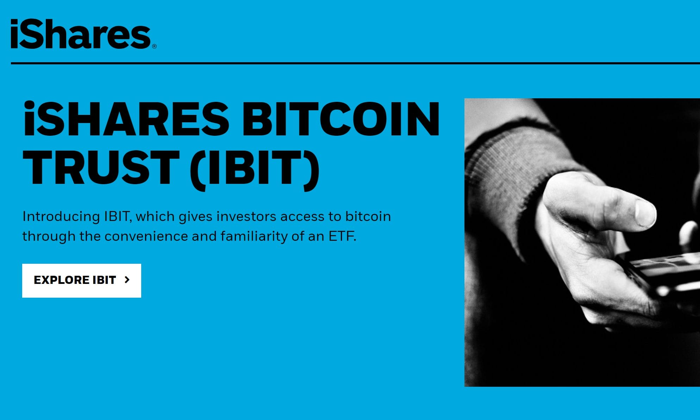The emergence of a Litecoin ETF marks a significant milestone in cryptocurrency investment, as Canary Capital recently filed for the first Litecoin ETF in the United States. With this groundbreaking initiative, investors can finally gain exposure to Litecoin, a cryptocurrency gaining traction among enthusiasts and institutional investors alike. Canary Capital’s CEO, Steven McClurg, explained that their mission is to identify opportunities before they trend, and the filing for this Litecoin investment is a testament to that vision. In a market increasingly filled with cryptocurrency ETFs, the Litecoin ETF stands out as a strategic leap, bridging the gap between traditional finance and digital assets. As news surrounding Litecoin continues to unfold, this ETF may very well reshape the landscape for potential investors looking to capitalize on this digital currency.
Introducing a Litecoin exchange-traded fund revolutionizes the way investors interact with this popular cryptocurrency. This innovative financial product allows for broader market access to Litecoin, which has steadily climbed in popularity and value. Acknowledging its potential, Canary Capital’s CEO has recognized the importance of entering the cryptocurrency ETF arena, particularly with assets like Litecoin now classified as non-securities. With the increasing acceptance of alternative investment vehicles in the realm of digital currencies, the first Litecoin ETF not only signals a shift in investor sentiment but also a growing recognition of the potential that cryptocurrencies hold for the future of finance. This ETF could potentially pave the way for more diverse portfolios, encompassing a range of cryptocurrencies and aligning them with traditional asset classes.
Canary Capital’s Vision for Cryptocurrency ETFs
Canary Capital’s commitment to identifying early opportunities within the cryptocurrency landscape is particularly notable. CEO Steven McClurg articulated that the firm’s strategic decisions focus on value and viability. As larger players like BlackRock dominate the ETF space, smaller firms must tread carefully. The approach of proactively seeking out investments that are primed for success resonates with both institutional and retail investors alike, as it highlights the potential for future growth in less-explored areas of the market.
By focusing on emerging trends such as Litecoin and NFT technology, Canary Capital positions itself as a frontrunner in a fiercely competitive environment. This methodical approach not only mitigates risks but also allows the firm to capitalize on nascent opportunities before they capture mainstream attention. With the rise of cryptocurrency ETFs, there is a palpable excitement surrounding how Canary’s innovative strategies might shape investors’ perspectives on asset allocation within the cryptocurrency domain.
The First Litecoin ETF: A Game Changer
The filing for the first Litecoin ETF marks a significant milestone in the cryptocurrency landscape. By opting for Litecoin, Canary Capital distinguishes itself from other players focusing on more mainstream cryptocurrencies like Solana or XRP. McClurg’s foresight stems from the SEC’s classification of Litecoin alongside Bitcoin and Ethereum as non-securities, providing a favorable environment for the approval of this ETF. This strategic choice could pave the way for a growing acceptance of Litecoin as a legitimate investment vehicle within regulated frameworks.
The excitement surrounding the first Litecoin ETF also ties into a broader narrative of cryptocurrency investments gaining traction. Given the recent approvals of ETFs for other major tokens, investors are left contemplating the potential gains that Litecoin can offer. As regulatory acceptance increases, the Litecoin ETF may attract both speculators and long-term investors, adding a credible option for those looking to include this asset in their portfolios.
Exploring Outlier Investments: Hedera and Beyond
Canary Capital’s decision to file for an ETF linked to Hedera (HBAR) exemplifies their willingness to pursue unconventional investment strategies. Analysts were taken aback by this commitment to an asset that does not currently boast the highest market cap, highlighting Canary’s unique focus on tokens with potential that others overlook. By identifying HBAR, which has low visibility compared to larger blockchain projects, Canary illustrates a keen sense for spotting investment opportunities ahead of the curve.
This forward-thinking approach not only positions Canary Capital as an innovator in the ETF space but also underscores its goal of discovering the ‘next big thing’ in cryptocurrency investments. Firms that follow someone’s lead and rush to file for already popular tokens might miss out on significant gains. Instead, by targeting underrecognized altcoins like HBAR, Canary could lead the market as institutional interest begins to shift toward these overlooked assets.
The Strategy Behind Emerging Technologies: Axelar ETF Filing
Canary Capital took another bold step with its recent filing for a spot Axelar (AXL) ETF, showcasing its intent to invest in lesser-known infrastructures that are pivotal to the cryptocurrency ecosystem. This innovative project has largely flown under the radar, despite its strong integration within developer environments. McClurg’s insights into the connections Axelar has cultivated stress the importance of underlying technology, suggesting that the real value in crypto may lie beyond mainstream attention.
As investors witness the expansion of cryptocurrency applications, now is the opportune time for a firm like Canary Capital to shine a light on hidden gems within the industry. Axelar’s interoperability capabilities could soon become vital as DeFi projects gain momentum. This forward-thinking strategy not only allows Canary to differentiate itself in the market but also promises to capture investor interest in blockchain projects focused on enhancing technological collaboration.
Incorporating NFTs into Traditional ETF Structures
The rise of NFTs has disrupted traditional investment paradigms, and Canary Capital is leading the charge by attempting to integrate these digital assets into ETF structures. Their decision to file for an ETF linked to the Pudgy Penguins NFT collection signals a significant transition in how investors can engage with the world of NFTs. By recognizing the broader potential of NFTs beyond mere collectibles, the firm positions itself at the intersection of technology and investment success.
NFTs like Pudgy Penguins not only provide exposure to digital ownership but also have promising implications for related merchandise and media rights. This understanding of intellectual property in the context of digital assets boosts investor confidence and adds an additional layer of value for those incorporating NFT-focused ETFs into their portfolios. As regulatory frameworks continue to evolve, Canary’s proactive venture into this space could lead the way for a new breed of investment opportunities.
Anticipating Approval Timelines for Cryptocurrency ETFs
Given the ever-changing landscape of cryptocurrency regulation, Canary Capital’s McClurg provides insight into realistic expectations regarding approval timelines for altcoin ETFs. His experiences with previous ETF filings have instilled a sense of caution, advising stakeholders to remain patient as the SEC begins to loosen its grip on the market. With a promising shift under the new SEC leadership, momentum is building for potential approvals within the coming year.
The anticipation surrounding the approval of multiple single-token altcoin ETFs, including Litecoin, reflects growing confidence in the cryptocurrency sector. Investors are keenly observing regulatory movements, all while strategizing on how to incorporate these new financial products into diverse portfolios. This emerging optimism surrounding altcoin ETFs, particularly those linked to established tokens like Litecoin, may spark a renewed interest in cryptocurrency investments as institutional and retail participation continues to rise.
Frequently Asked Questions
What is the first Litecoin ETF and what does it aim to achieve?
The first Litecoin ETF, filed by Canary Capital, aims to provide investors with an efficient way to gain exposure to Litecoin (LTC) as a cryptocurrency investment. By filing this ETF, Canary Capital recognizes Litecoin’s classification as a non-security by the SEC, similar to Bitcoin and Ethereum, and hopes to capitalize on early market opportunities before they trend.
Why did Canary Capital choose to file for the Litecoin ETF instead of other cryptocurrencies?
Canary Capital decided to file for the Litecoin ETF because they saw potential in Litecoin’s market position and distribution model, which they believe is unlikely to be classified as a security. This strategy was reinforced by the previous approval of Bitcoin and Ethereum ETFs, making Litecoin a viable option for ETF investment.
What other cryptocurrency ETFs has Canary Capital filed for alongside the Litecoin ETF?
Alongside the first Litecoin ETF, Canary Capital has filed for additional ETFs including the first spot Hedera (HBAR) ETF and a spot Axelar (AXL) ETF, indicating their strategy to invest in underrecognized cryptocurrencies that may evolve into trending investment opportunities.
How does the regulatory environment affect the approval timeline for the Litecoin ETF?
The regulatory environment plays a crucial role in the approval timeline for the Litecoin ETF. Canary Capital’s CEO, McClurg, suggests that with a favorable shift in the SEC’s leadership and stance, they anticipate potential approvals for up to four single-token altcoin ETFs, including the Litecoin ETF, within the year.
What opportunities does the Pudgy Penguins ETF present in the cryptocurrency market?
The Pudgy Penguins ETF, linked to a popular NFT collection, presents a unique opportunity in the cryptocurrency market by combining traditional investment vehicles with digital collectibles. This approach responds to the regulatory shift that allows NFT-based investment products, with a focus on the potential brand and IP growth associated with the Pudgy Penguins.
How does Canary Capital view the future of Litecoin investments in light of its ETF filing?
Canary Capital views the future of Litecoin investments positively, especially in light of their ETF filing. The firm believes that Litecoin’s established market presence and regulatory clarity provide a solid foundation for long-term investor interest and potential growth as they navigate the evolving landscape of cryptocurrency ETFs.
What are the implications of Litecoin’s classification as a non-security by the SEC?
Litecoin’s classification as a non-security by the SEC is significant as it opens the door for financial products such as ETFs. This status allows for regulated investment vehicles like the Litecoin ETF to potentially receive approval, attracting more institutional and retail investors looking for exposure to Litecoin as a legitimate asset class.
| Key Aspect | Details |
|---|---|
| Canary Capital’s Strategy | To identify opportunities before they become mainstream, like the first Litecoin ETF. |
| First Litecoin ETF Filing | Filed S-1 form on October 16, 2023, recognizing Litecoin as a non-security. |
| Outlier ETF Filings | Filed for Hedera (HBAR) ETF on November 12, leveraging its potential despite low market visibility. |
| Targeting Underrecognized Projects | Filed for Axelar (AXL) ETF on March 5, highlighting its significant but underreported infrastructure role. |
| NFT Integration | Filed for ETF linked to Pudgy Penguins NFTs, focusing on the brand’s wider IP potential. |
| Future Approval Expectations | Cautiously optimistic about the approval of multiple single-token altcoin ETFs in the near future. |
Summary
The Litecoin ETF represents a significant development in the cryptocurrency investment landscape. This initiative, led by Canary Capital, aims to capitalize on favorable regulatory conditions and recognize the potential of Litecoin as a non-security asset. With strategic filings for other innovative ETFs, including those related to NFTs and lesser-known projects, Canary is positioning itself as a key player in identifying and leveraging emerging trends within the blockchain space. As the market evolves, the approval and success of the Litecoin ETF could pave the way for similar investment products, enhancing the accessibility of cryptocurrencies to investors.
The recent introduction of the first Litecoin ETF by Canary Capital is generating significant buzz in the cryptocurrency community. This innovative investment vehicle opens a new avenue for Litecoin investment, offering investors an opportunity to gain exposure to this leading cryptocurrency without the complexities of direct ownership. According to CEO Steven McClurg, the firm aims to capitalize on regulatory advancements that have recognized Litecoin alongside Bitcoin and Ethereum as non-securities, making them ideal candidates for ETFs. As Litecoin news continues to unfold, investors are eager to follow the developments that could position them favorably in the evolving landscape of cryptocurrency ETFs. With the increasing interest in Litecoin and the potential for robust returns, this pioneering ETF could be a game changer for both seasoned and new investors alike.
Canary Capital’s recent move to launch the first-ever ETF focused on Litecoin represents a bold step in the world of cryptocurrency assets. Dubbed the Litecoin investment vehicle, this development showcases the firm’s commitment to identifying unique opportunities within the blockchain sphere. The ETF aims to provide investors with easy access to Litecoin’s growth potential, particularly as regulatory environments shift in favor of diverse cryptocurrency ETFs. By targeting this lesser-explored niche, Canary Capital positions itself ahead of market trends, providing insights that might have far-reaching implications for both the crypto space and investment strategies at large. As discussions around cryptocurrency investment gain momentum, the spotlight on this Litecoin ETF is poised to illuminate the paths for future innovations in the finance sector.















